Brake Pad Set
Select vehicle to guarantee fit
- Department
- Friction Material Composition
- Material
- Series
- Brands
- Prices
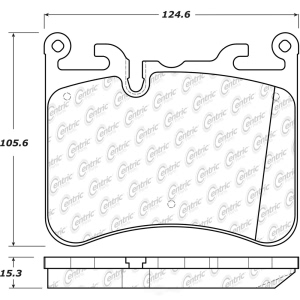
 $163.78Product Specifications
$163.78Product Specifications- UPC: 805890213451
- Part Description: Posi Quiet™ Semi-Metallic Rear Disc Brake Pads

 $97.05Product Specifications
$97.05Product Specifications- Chamfer Option: With Chamfers
- FMSI: D1842
- Friction Material: Semi-Metallic
- Hardware Option: Included
- Inner Pad Thickness: 20.828mm (0.82")
- Outer Pad Thickness: 20.828mm (0.82")
- Quantity: Sold as Set
- Series: SevereDuty™
- Shims Option: With Shims
- Slot Option: Without Slot
- UPC: 008536963080
- Wear Sensor Option: With Electronic Wear Sensor
- Part Description: Severeduty Semi Metallic Front Disc Brake Pads

 $129.82Product Specifications
$129.82Product Specifications- FMSI: D983-7885
- Friction Material: Ceramic
- Quantity: 8 Pad Set
- Series: EURO™ Ultra-Premium
- UPC: 886931095939
- Part Description: EURO™ Ultra-Premium Ceramic Front Disc Brake Pads

 $102.87Product Specifications
$102.87Product Specifications- Brake System: Brembo
- Height: 86.7
- Indicator Type: prepared for wear indicator
- Nominal Thickness (mm): 20.2
- OE Part Number: 34 11 9 502 904, 34 11 2 284 869, 34 11 2 284 369
- Surface Type: chamfered & slotted
- Width (mm): 207.6
- Wva: 25133
- Part Description: Premium Low-Met OE Equivalent Front Brake Pads

 $70.87Product Specifications
$70.87Product Specifications- Friction Material: Ceramic
- OE Part Number: 45022STXA00, 45022SZAA00, 45022SZAA10
- Quantity: Sold as Set
- Series: Ultra-Premium™
- UPC: 886931241855
- Part Description: Ultra-Premium™ Ceramic Front Disc Brake Pads
OEM (Genuine) Set Pad Front (17Cl
PartNumber: 45022-T2G-A01$71.38 MSRP:$100.83You Save: $29.45 (30%)Product Specifications- Other Names: Front Pads
- Item Dimensions: 6.6 x 3.5 x 2.6 inches
- Item Weight: 4.50 Pounds
- Fitment Type: Direct Replacement
- Replaces: 45022-T2G-A00
- Part Description: Set Pad Front (17Cl
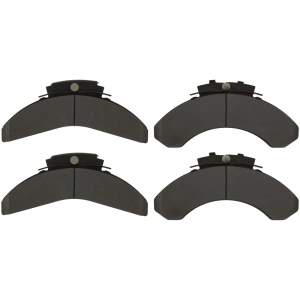
 $160.95Product Specifications
$160.95Product Specifications- UPC: 889590061079
- Part Description: Posi Quiet™ Extended Wear Brake Pads With Shims

 $100.14Product Specifications
$100.14Product Specifications- FMSI: D984
- Friction Material: Ceramic
- Quantity: 8 Pad Set
- Series: EURO™ Ultra-Premium
- UPC: 886931095878
- Part Description: EURO™ Ultra-Premium Ceramic Rear Disc Brake Pads

 $94.07Product Specifications
$94.07Product Specifications- Brake System: Brembo
- Hardware Material: with counterweights
- Height: 117.3
- Indicator Type: prepared for wear indicator
- Nominal Thickness (mm): 19.6
- OE Part Number: 34 11 6 874 432, 34 11 6 889 585, 34 10 8 064 560, 34 10 8 064 561, 34 11 6 888 460, 34 11 6 874 431, 34 10 6 883 510, 34 10 6 888 459, 34 10 8 064 562
- Width (mm): 124.9
- Part Description: Premium Ceramic Front Disc Brake Pads

 $59.79Product Specifications
$59.79Product Specifications- Friction Material: Ceramic
- Quantity: Sold as Set
- Series: Ultra-Premium™
- Part Description: Ultra-Premium™ Ceramic Front Disc Brake Pads

 $94.18Product Specifications
$94.18Product Specifications- Chamfer Option: Without Chamfers
- FMSI: D1540
- Friction Material: Semi-Metallic
- Hardware Option: Included
- Inner Pad Thickness: 15.494mm (0.61")
- Outer Pad Thickness: 15.494mm (0.61")
- Quantity: Sold as Set
- Series: SevereDuty™
- Shims Option: With Shims
- Slot Option: Without Slot
- UPC: 008536947912
- Wear Sensor Option: With Electronic Wear Sensor
- Part Description: Severeduty Semi Metallic Front Disc Brake Pads
OEM (Genuine) Set, Pad Rear
PartNumber: 43022-TA0-A81$70.61 MSRP:$99.75You Save: $29.14 (30%)Product Specifications- Other Names: Brake Pads, Rear Pads
- Item Dimensions: 3.8 x 3.7 x 2.5 inches
- Item Weight: 2.20 Pounds
- Fitment Type: Direct Replacement
- Replaces: 43022-TA0-A80
- Part Description: Set, Pad Rear

 $94.12Product Specifications
$94.12Product Specifications- FMSI: D1546-8754
- Friction Material: Ceramic
- Quantity: Sold as Set
- Series: EURO™ Ultra-Premium
- UPC: 886931283244
- Part Description: EURO™ Ultra-Premium Ceramic Front Disc Brake Pads

 $92.97Product Specifications
$92.97Product Specifications- Brake System: Brembo
- Height: 94.3
- Indicator Type: prepared for wear indicator
- Nominal Thickness (mm): 16
- Surface Type: chamfered
- Width (mm): 209.5
- Wva: 25007
- Part Description: Premium Low-Met OE Equivalent Front Brake Pads
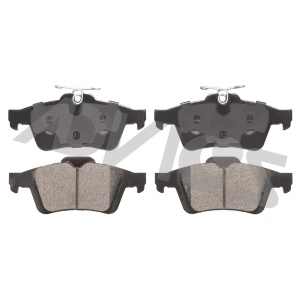
 $69.31Product Specifications
$69.31Product Specifications- Friction Material: Ceramic
- OE Part Number: 15271565, 25869425, 93190338, C2C27271, C2P17595, BPYK-26-48ZA, 13 32 2091, 93 16 6942, 93 18 3140, 93 19 0338, BPYK-26-48ZB, C2Y3-26-48ZA, C2Y3-26-48Z, 30742031-0
- Quantity: Sold as Set
- Series: Ultra-Premium™
- UPC: 886931241688
- Part Description: Ultra-Premium™ Ceramic Rear Disc Brake Pads

 $70.59Product Specifications
$70.59Product Specifications- UPC: 805890664079
- Part Description: Posi Quiet™ Ceramic Front Disc Brake Pads

 $93.32Product Specifications
$93.32Product Specifications- Chamfer Option: Without Chamfers
- FMSI: D1540
- Friction Material: Semi-Metallic
- Hardware Option: Included
- Inner Pad Thickness: 15.494mm (0.61")
- Outer Pad Thickness: 15.494mm (0.61")
- Quantity: Sold as Set
- Series: SevereDuty™
- Shims Option: With Shims
- Slot Option: Without Slot
- UPC: 008536947813
- Wear Sensor Option: With Electronic Wear Sensor
- Part Description: Severeduty Semi Metallic Front Disc Brake Pads
OEM (Genuine) Rear Brake Pad Set
PartNumber: 43022-STX-A01$66.60 MSRP:$93.68You Save: $27.08 (29%)Product Specifications- Other Names: Brake Pads, Rear Pads
- Item Dimensions: 4.9 x 3.5 x 3.0 inches
- Item Weight: 3.20 Pounds
- Fitment Type: Direct Replacement
- Replaces: 43022-STX-A00
- Part Description: Rear Brake Pad Set

 $96.01Product Specifications
$96.01Product Specifications- FMSI: D1880
- Friction Material: Ceramic
- Quantity: Sold as Set
- Series: EURO™ Ultra-Premium
- UPC: 821726106728
- Part Description: EURO™ Ultra-Premium Ceramic Front Disc Brake Pads

 $86.68Product Specifications
$86.68Product Specifications- Brake System: Brembo
- Height: 86.9
- Indicator Type: prepared for wear indicator
- Nominal Thickness (mm): 20.2
- OE Part Number: 34 11 9 502 904, 34 11 2 284 869, 34 11 2 284 369
- Surface Type: chamfered & slotted
- Width (mm): 209.4
- Wva: 25133
- Part Description: Premium Ceramic Front Disc Brake Pads

 $64.93Product Specifications
$64.93Product Specifications- Friction Material: Ceramic
- OE Part Number: D10601TG1C, D1060JL00A, D1060JL00B, D1060JL00J, D1060JL00K
- Quantity: Sold as Set
- Series: Ultra-Premium™
- UPC: 886931244399
- Part Description: Ultra-Premium™ Ceramic Front Disc Brake Pads
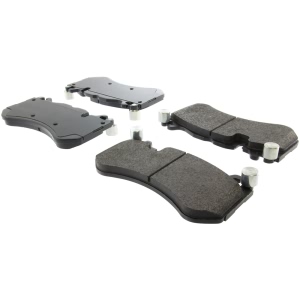
 $70.85Product Specifications
$70.85Product Specifications- UPC: 805890983309
- Part Description: Posi Quiet™ Extended Wear Semi-Metallic Front Disc Brake Pads
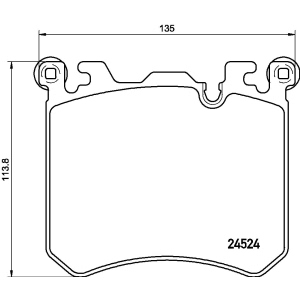
 $66.76Product Specifications
$66.76Product Specifications- Brake System: Brembo
- Height: 113.8
- Indicator Type: prepared for wear indicator
- Nominal Thickness (mm): 19.2
- OE Part Number: 34114073048, 34116793643, 34116794880, 34116799964
- Surface Type: chamfered
- Width (mm): 135
- Wva: 24524
- Part Description: Premium Low-Met OE Equivalent Front Brake Pads
OEM (Genuine) Front Brake Pad Set
PartNumber: 45022-STX-A00$83.75 MSRP:$117.80You Save: $34.05 (29%)Product Specifications- Item Dimensions: 4.7 x 3.5 x 3.2 inches
- Item Weight: 3.40 Pounds
- Fitment Type: Direct Replacement
- Part Description: Front Brake Pad Set

 $67.68Product Specifications
$67.68Product Specifications- Friction Material: Ceramic
- OE Part Number: BT4Z 2001-A, 7T4Z 2001-A, BT4Z 2001-B, L2Y6-33-23Z, L2Y6-33-28Z
- Quantity: Sold as Set
- Series: Ultra-Premium™
- UPC: 886931214255
- Part Description: Ultra-Premium™ Ceramic Front Disc Brake Pads
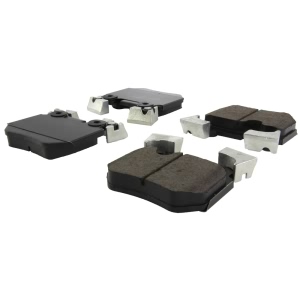
 $89.23Product Specifications
$89.23Product Specifications- UPC: 805890757733
- Part Description: Posi Quiet™ Ceramic Rear Disc Brake Pads
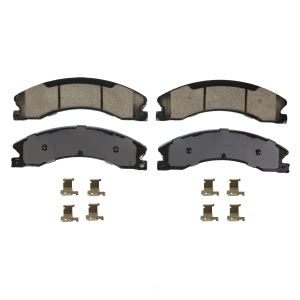
 $83.04Product Specifications
$83.04Product Specifications- Chamfer Option: With Chamfers
- FMSI: D1565
- Friction Material: Semi-Metallic
- Hardware Option: Included
- Inner Pad Thickness: 17.526mm (0.69")
- Outer Pad Thickness: 17.526mm (0.69")
- Quantity: Sold as Set
- Series: SevereDuty™
- Shims Option: With Shims
- Slot Option: With Slot
- UPC: 008536651710
- Wear Sensor Option: With Mechanical Wear Sensor
- Part Description: Severeduty Semi Metallic Rear Disc Brake Pads
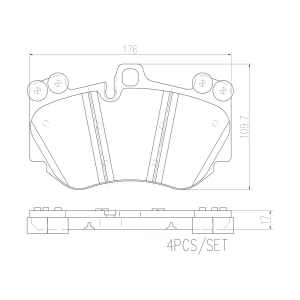
 $94.62Product Specifications
$94.62Product Specifications- Brake System: Brembo
- Height: 109.7
- Indicator Type: prepared for wear indicator
- Nominal Thickness (mm): 17
- OE Part Number: 955 351 939 50, 955 351 939 51, 4E0 698 151 G
- Surface Type: chamfered & slotted
- Width (mm): 176
- Wva: 23961
- Part Description: Premium Ceramic Front Disc Brake Pads
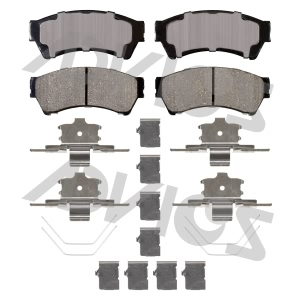
 $58.73Product Specifications
$58.73Product Specifications- Friction Material: Ceramic
- OE Part Number: 6E5Z2001B, 6E5Z2001C, 9E5Z2001A, GPYB3323ZG, GPYB3328ZF
- Quantity: Sold as Set
- Series: Ultra-Premium™
- UPC: 886931247246
- Part Description: Ultra-Premium™ Ceramic Front Disc Brake Pads
OEM (Genuine) Front Brake Pad Set
PartNumber: 45022-TZ5-A01$79.54 MSRP:$111.88You Save: $32.34 (29%)Product Specifications- Other Names: Brake Pads, Front Pads
- Item Dimensions: 7.2 x 3.5 x 3.4 inches
- Item Weight: 2.20 Pounds
- Fitment Type: Direct Replacement
- Replaces: 45022-TZ5-A00
- Replaced by: 45022-TZ5-A02
- Part Description: Front Brake Pad Set
About Brake Pad Set
Brake pads were introduced to racing in the 1950s, shortly after they started to appear in cars. Today they are essential for a vehicle, having those four disc brakes insure that your vehicle will come to a stop. Brake pads are made up of plates of steel with a friction material. There are brake pads and ceramic pads which do the same job just that the ceramic pads work better for exotic cars and under high temperature, and the normal brake pads perform better for most vehicles.
Brake pad functionThe brake pads job is to transfer the kinetic energy of the vehicle to the thermal energy which is caused by friction. Therefore having two brake pads will clamp the pads onto the rotor causing the spinning to slow down when you press on the brake. The contact between the brake pad and rotor causes heat which transfers to the disc leaving a coat that becomes dull over time. Usually the brake pads are made to alert the driver when the brake pads begin to wear.
TechnologyThe benefit of the disc brake is that it proves the vehicle with better stopping performance unlike the drum brakes. The advancement in technology has made it so there is better resistance to brake fade. They also recover quickly from immersion of water, and they have a servo assistance that helps reduce pedal effort.
Types and MaterialThere are many types of the brake pads, which can vary depending on the vehicle. Most vehicles require that you get a specific kind of brake pads, but can be changed if upgrading. The material is also important as it provides a lot of resistance towards brake fade, moisture, and allows for a smooth braking experience.
Common issues with worn out brake padsA brake pad will eventually wear out, so it is important that you replace the component as soon as possible. A worn out brake pad will reduce the ability to stop the vehicle and will cause grinding noises.





